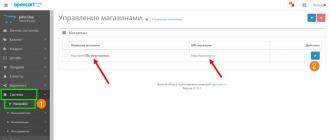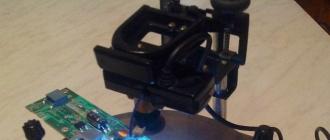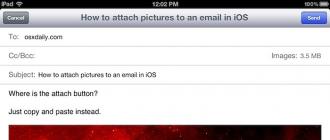Share this article:
With so many GIS shops hanging on to legacy ArcView 3.x project files (.apr), having a running ArcView 3.x version in still a necessity for some. Others still find preferable to ArcGIS. Installing ArcView 3.x straight from its original installation CD unfortunately won’t work. The installer is 16-bit so trying to install ArcView’s setup.exe using the computability tab found on Windows 7 is not an option.
The steps below are what worked for me when I needed to install ArcView 3.3 on a Windows 7 operating system and I found them to be the simplest way to install a running version of ArcView 3.3:
Installing ArcView 3.3 on Windows 7 – Solution 1
This first solution requires access to a Windows machine running Windows XP. Even thought it’s deprecated, ArcView 3.3 is still a commercial GIS software package so only transfer ArcView 3.3 installations that you are licensed for.
Copy over the Required Files
- From the XP machine copy C:\ESRI and paste in the same named folder on Windows 7
- From the XP machine copy the files in C:\Program Files\Common Files\ESRI and paste into your Windows 7 machine in the following directory: C:\Program Files (x86)\Common Files\ESRI
- On the XP machine, copy the ESRI fonts from c:\windows\fonts. On the Windows 7 machine, install those fonts.
Update: these additional instructions have been supplied by James Cokinos from CGG on making sure that the final file, mtch.dll is copied over:
Once these files are copied over there will still be one missing file you have to get before you can run the .exe from the BIN32 folder. One .dll (dynamic link library) called mtch.dll needs to be copied over:
Copy and paste this .dll from the Windows XP machine into the following folder –> C:\ESRI\AV_GIS30\ARCVIEW\BIN32
Testing the ArcView 3.3 Installation
Once all the necessary files have been copied (and the ESRI fonts installed), you are ready to test your ArcView 3.3 installation. Navigate to
C:\ESRI\AV_GIS30\ARCVIEW\BIN32\arcview.exe and double-click to launch the application.

To have Windows 7 automatically open .apr files using ArcView 3.3, double-click on any .apr file. In the dialogue box that appears, click the browse button and navigate to C:\ESRI\AV_GIS30\ARCVIEW\BIN32\ and select arcview.exe. In the Open with dialogue box, make sure the “Always use the selected program to open this kind of file” is checked and hit the OK button. Now Arcview.exe is associated with .apr files and double-clicking this file type will automatically launch ArcView 3.3 in the future.

Second Method for Installing ArcView 3.x on Windows Vista or Windows 7
For a 64-bit Windows OS you have two options:
1) Copy all of the files, and registry settings, manually; or
2) Create your own 32-bit or 64-bit installer.
I chose the second option and created my own 32-bit installer using Microsoft Visual Studio. Here is what I did – NOTE: You can use these instructions for manually copying the files too. %windir% means the Windows directory, usually C:\WINDOWS\.
1) Start with a clean install of a 32-bit Windows OS (I used XP Pro). I also installed MS Visual Studio.
2) Create and save a listing of all files in the directory:
%windir%\system32\
3) Install ArcView 3.x and any extensions you want. For these instructions, I also installed Network Analyst and Database Access. Also add the extensions you want which do not have their own installer, such as Compiled Table Tools.
5) If you want ArcView to already be registered, launch ArcView and register it now.
6) Find all of the files the installers have added. If you did not install the same extensions I installed, then some of these files I list below may not be installed, or additonal files may be installed. Just be methodical and careful when looking for which files were added.
6a) Because you started with a clean OS install, with no other ESRI apps, you can just grab everything in:
C:\ESRI\
C:\Program Files\Common Files\ESRI\
6b) Grab the ArcView 3.x fonts installed in %windir%\Fonts:
esri_1.ttf
esri_155.ttf
esri_2.ttf
esri_3.ttf
esri_4.ttf
esri_5.ttf
esri_6.ttf
esri_7.ttf
esri_8.ttf
esri_9.ttf
6c) Also grab these files, if they were installed:
C:\Program Files\Common Files\Microsoft Shared\DAO\Dao2535.tlb
C:\Program Files\Common Files\Microsoft Shared\DAO\dao350.dll
6d) There may also some files installed in the %windir%\system32\ directory. Use the list you created in step 2 (above) to find the new files which where installed with ArcView. NOTE: You may not need to install/copy all of these files. The rule I used for all files was only install a file if it does not already exist on the target system.
7) Grab the registry settings the installers have added.
Grab everything in:
“HKEY_LOCAL_MACHINE\SOFTWARE\ESRI”
And also grab these keys:
HKEY_LOCAL_MACHINE\SOFTWARE\Microsoft\Windows\CurrentVersion\App Paths\ArcView.exe
HKEY_LOCAL_MACHINE\SOFTWARE\Classes\.apr
HKEY_LOCAL_MACHINE\SOFTWARE\Classes\ArcView Project\shell\open\command
Copy the files and registry settings to the target machine.
8a) Copy the files in these direcotries to the same directory on the target machine:
C:\ESRI\
C:\WINDOWS\Crystal\ (only if you installed Crystal Reports)
8b) For these directories, copy the files:
from C:\Program Files\Common Files\Microsoft Shared\DAO\
to C:\Program Files (x86)\Common Files\Microsoft Shared\DAO\.
from %windir%\system32\
to %windir%\SysWOW64\
8c) Register these files, if they were copied, using “%windir%\syswow64\regsvr32″. For example:
c:\windows\syswow64\regsvr32
C:\Program Files (x86)\Common Files\ESRI\Mo20.ocx
C:\Program Files (x86)\Common Files\ESRI\Shape20.dll
%windir%\SysWOW64\comcat.dll
%windir%\SysWOW64\comct232.ocx
%windir%\SysWOW64\comctl32.ocx
%windir%\SysWOW64\comdlg32.ocx
%windir%\SysWOW64\crystl32.ocx
%windir%\SysWOW64\mfc40.dll
%windir%\SysWOW64\mfc42.dll
%windir%\SysWOW64\mscomct2.ocx
%windir%\SysWOW64\MSCOMCTL.OCX
%windir%\SysWOW64\msvbvm50.dll
%windir%\SysWOW64\msvbvm60.dll
%windir%\SysWOW64\tabctl32.ocx
%windir%\SysWOW64\tdbg5.ocx
%windir%\SysWOW64\threed32.ocx
If you installed extensions which I did not install, there may be other files which need to be registered. Try the extension and if it does not work, look for DLL or OCX files that are specific to that extension and register the files.
8d) You cannot just copy font files to the fonts folder on the target machine. Instead, on XP, navigate to the Fonts directory on the target machine and from the file browser “File” menu choose “Install New Font…”. There should be a similar method in Vista and 7.
8e) To manually copy a registry key, find the key in Regedit. Right-click on the key and select Export to save the keys/values to a text file. Then, copy the file to the target machine and right-click on the file and select Merge.
IMPORTANT: You have to edit this registry key before Merging it on the target machine. Edit the file you Exported in any text editor.
change HKEY_LOCAL_MACHINE\SOFTWARE\Microsoft\Windows\CurrentVersion\App Paths\ArcView.exe
to HKEY_LOCAL_MACHINE\SOFTWARE\Wow6432Node\Microsoft\Windows\CurrentVersion\App Paths\ArcView.exe
Good luck!

Related Post:
ArcView Free Download Latest Version setup for Windows. It is full offline installer standalone setup of ArcView for Windows 32 bit 64 bit PC.
ArcView Overview:
ArcView is an application that can be used for building maps after deep analysis and with up-to-date data. Maps build through ArcView can be used for making decisions. It has been developed by Esri and is now known as ArcGIS for Desktop.
There are lots of tools available for spatial analysis and these tools will permit you to transform your data into actionable information. ArcView has a support for a a wide range of formats. With almost 70 plus formats you can easily integrate different types of data for analysis and visualization. The workflow can be automated with some advanced tools. It has got a large library of symbols and has some predefined templates plus a useful wizard which will assist you to build maps of highest quality. You can also which is great application.

Geocoding is also also enabled that can be performed for simple data analysis as well as for business management. ArcView is a useful product in which you can access advanced imagery.

Features of ArcView:
Below are some noticeable features which you’ll experience after ArcView free download.
- Can build detailed models.
- Can perform deep analysis.
- Lots of tools for spatial analysis.
- Supports a wide range of formats.
- Automated workflow.
- Got huge library of symbols.
- Got predefined templates.
- A useful wizard for building maps.
- Can access advanced imagery.

ArcView Technical Setup Details
- Software Full Name: ArcGIS 10.1
- Setup File Name: ArcGIS_10.1.ISO
- Full Setup Size: 4.3 GB
- Setup Type: Offline Installer / Full Standalone Setup
- Compatibility Architecture: 32 Bit (x86) / 64 Bit (x64)
- Latest Version Release Added On: 16th Feb 2015
- Developers: ESRI
System Requirements For ArcView
Before you start ArcView free download, make sure your PC meets minimum system requirements.
- Operating System: Windows XP/Vista/7/8
- Memory (RAM): 256MB of RAM required.
- Hard Disk Space: 700MB of free space required.
- Processor: Intel Pentium 4 or later.
Click on below button to start ArcView Free Download. This is complete offline installer and standalone setup for ArcView. This would be compatible with both 32 bit and 64 bit windows.
ArcView Stream Mode Digitizing Extension
Оцифровка (векторизация, процесс перевода растровых данных в векторную форму) - процесс утомительный, нудный и значительное количество времени отнимающий. Для облегчения подобного рода работ департаментом природных ресурсов штата Миннесоты (США) (http://www.dnr.state.mn.us/)
был разработан Stream Digitizing Extension для ArcView, позволяющий быстро оцифровывать объекты на экране. Можно просто проводить линию по экрану без расстановки вершин (вертексов). Streem Digitizing Extension расставит их самостоятельно с тем интервалом, который вы зададите в окне настройки. Отличительной чертой расширения является то, что оно позволяет строить топологически корректную структуру, пристыковывая вновь создаваемый объект к ранее существующему. Позволяет строить линии и полигоны.
Скачать расширение можно (20 килобайт).
EPPL7 Image Support
С помощью этого расширения можно просматривать в ArcView 3.X растровые изображения пакета обработки растровых данных EPPL7, разработанный Информационным центром по землеустройству (Land Management Information Center - LMIC) штата Миннесоты (http://www.lmic.state.mn.us)
.
Скачать расширение можно (30 килобайт). Необходимо скопировать файл eppl7.avx
в директорию Ext32
, а eppl2av.dll
- в директорию Bin32
.
Snap2other
Стандартные средства ArcView 3.X предоставляют возможность осуществялть объектную привязку только внутри одной активной редактируемой темы (Theme - Properties - Editing - Snapping). Расширение Snap2other, разработнаное Джоном Грейсоном (John Grayson) и доступное на сайте ESRI (http://arcscripts.esri.com
), позволяет частично обойти эту проблему. С помощью этого расширения можно привязать объекты из одной темы к объектам из другой темы. Причём привязывать друг к другу можно объекты разного характера локализации (точки к линиям, линии к полигонам, полигоны к точкам и т. д.). Возможно также изменять snap tolerance. Скачать расширение можно (3 килобайт).
COS.Copy Move Rotate Mirror
Стандартные средства ArcView 3.X позволяют производить только простейшие манипуляции с объектами, такие, как, например, перемещение и изменение масштаба. Расширение COS.Copy Move Rotate Mirror, доступное на сайте департамента сельского хозяйства США (http://www.fs.fed.us/) позволяет производить дополнительные операции - поворот и зеркальное отображение. Возможны свободные (произвольные, ручные) операции, а также поворот на заданный угол, перемещение на заданное расстояние и т. п. Скачать расширение и текстовое описание можно (32 килобайт).






